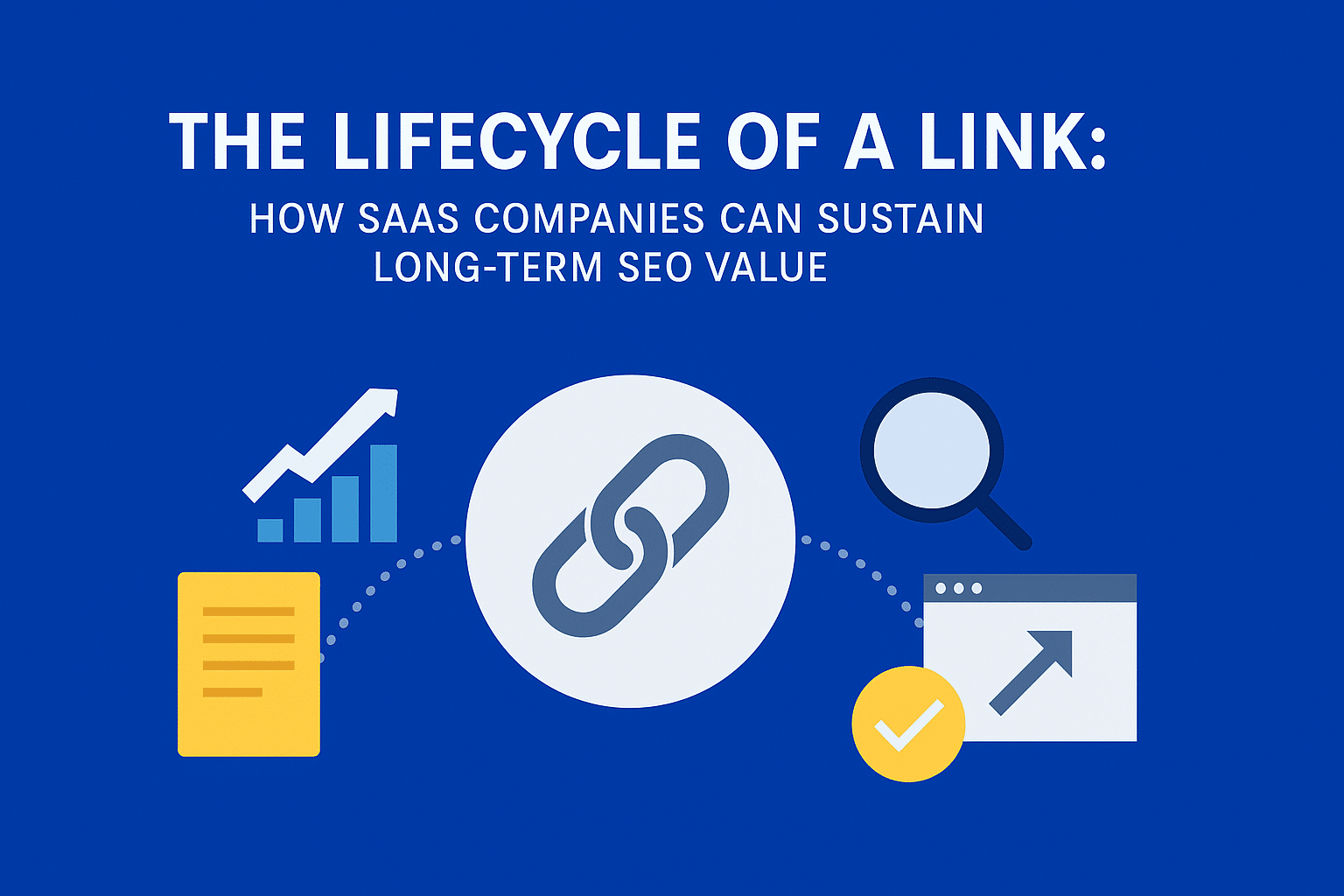The Lifecycle of a Link: How SaaS Companies Can Sustain Long-Term SEO Value
In the fast-paced world of SaaS, growth often hinges on scalable acquisition channels—search being a primary one. But while most marketers obsess over content calendars, keyword research, and technical SEO, the unsung hero of sustainable SEO success remains the backlink.
Link building for SaaS companies is not a one-time growth hack, it’s a lifecycle. Understanding how links are acquired, evaluated, maintained, and even lost is critical to sustaining long-term organic visibility and inbound pipeline in a competitive B2B landscape.
In this article, we explore the lifecycle of a link from ideation and acquisition to decay and renewal and provide actionable strategies to maximize the long-term value of every backlink.
1. Why Backlinks Still Matter in SaaS SEO
Search engines treat backlinks as votes of confidence from one site to another. For B2B SaaS companies, backlinks do more than boost rankings they:
- Build domain authority, helping your site compete for high-intent keywords.
- Drive referral traffic from niche-relevant sources.
- Increase brand visibility and trust, especially when placed on authoritative, industry-specific websites.
- Accelerate sales enablement, especially when your backlinks appear in thought leadership articles, analyst reviews, or customer success stories.
B2B buyers are highly research-driven. Earning visibility on trusted platforms positions your SaaS product as a credible solution. To achieve this effectively, partnering with the best seo agency for saas can help boost your online presence and reach the right audience.
2. The Lifecycle of a Link: An Overview
Think of each backlink as a living asset that goes through five phases:
- Attraction: Strategizing and creating content worthy of links.
- Acquisition: Earning the backlink via outreach, PR, or content.
- Assessment: Monitoring quality, relevance, and impact.
- Attrition: Link decay, removal, or devaluation.
- Augmentation: Refreshing, replacing, or regaining link equity.
Let’s break these down.
3. Phase 1: Attraction – Building Linkable Assets
Link-worthy content isn’t just a blog post with keywords, it’s a strategic asset. Here’s what earns backlinks in SaaS
Data-Driven Reports
Original data or industry insights (e.g., annual trend reports, benchmark studies) are highly referenced by journalists and bloggers.
Comparison and Alternatives Pages
Pages like “Top Software Alternatives” attract editorial links when cited in industry listicles or vendor roundups.
API & Developer Docs
Technical documentation often earns organic links from forums, developer communities, and integration partners.
Interactive Tools & Calculators
ROI calculators, diagnostic tools, or integration guides serve as both conversion tools and link magnets.
Example: HubSpot’s Website Grader earned thousands of backlinks by offering immediate value and shareability.
4. Phase 2: Acquisition – How SaaS Companies Earn Links
Once your content is link-worthy, the next step is to acquire links strategically and ethically:
Digital PR
Pitch your unique data, research, or insights to niche publications, SaaS directories, or tech news outlets.
Guest Posting & Expert Contributions
Contribute thought leadership to industry blogs and include contextual backlinks.
Partner Ecosystem Leverage
Collaborate with integration partners and cross-promote on their blogs or resource pages.
Podcast Guesting
B2B podcasts often link to guest bios or company websites, an overlooked link building avenue.
5. Phase 3: Assessment – Monitoring Link Health
Once acquired, links need to be tracked and evaluated, much like MRR or customer health scores.
Metrics to Watch:
- Referring domains and their domain authority (via Ahrefs or SEMrush)
- Anchor text diversity (avoid over-optimization)
- Link location (contextual in-content links > footers or sidebars)
- Relevance of linking domains to your SaaS niche
Tip for B2B teams: Share a monthly SEO report with your sales and marketing teams to align link health with inbound performance.
6. Phase 4: Attrition – Understanding Link Decay
Links don’t last forever. Over time, they can:
- Be removed during site redesigns.
- Get lost when content is deleted.
- Be replaced by competitors offering updated content.
- Lose value if the linking site’s authority drops.
According to Ahrefs, ~66% of links disappear within 10 years, many within just 2-3 years.
How to Fight Link Decay:
- Set up alerts for lost links (via Ahrefs or Google Search Console).
- Rebuild relationships with editors to update broken or outdated links.
- Refresh and relaunch old content that previously earned strong links.
7. Phase 5: Augmentation – Renewing and Scaling Link Value
Great SEO teams don’t just chase new links, they maximize existing ones.
Link Optimization Tactics:
- Update top-performing content with fresh data to keep it relevant (and linkable).
- Turn static PDFs into HTML pages to make them indexable and linkable.
- Add internal links from newly acquired high-authority pages to other strategic URLs (e.g., product or demo pages).
- Re-promote evergreen assets in newsletters, communities, and through outreach.
Advanced move: Repurpose original data into multiple content formats (infographics, videos, micro-content) to attract more links from varied platforms.
8. Measuring the ROI of a Link in SaaS
In SaaS, everything leads back to metrics. To measure the value of a backlink, connect it to:
- Increased rankings for target keywords.
- Higher organic traffic to key landing pages.
- Referral traffic conversions from linking sources.
- Lead attribution and assisted conversions (via multi-touch attribution models).
Tools to help:
- Google Analytics (referral paths & conversion tracking)
- HubSpot or Salesforce (source-to-pipeline attribution)
- Ahrefs / SEMrush (backlink and keyword impact)
9. Final Thoughts: Link Building as a Revenue Driver
In B2B SaaS, the buying cycle is long, trust is paramount, and visibility is everything.
Treat each link as more than an SEO metric; it’s a reputation marker, a sales enabler, and a brand amplifier.
When viewed as a lifecycle not a transaction link building becomes a flywheel for long-term growth.
Just like B2B Monks have emphasized in their approach to organic visibility, the key is not only building links but building them with intent, strategy, and sustainability in mind.

Leave a Reply